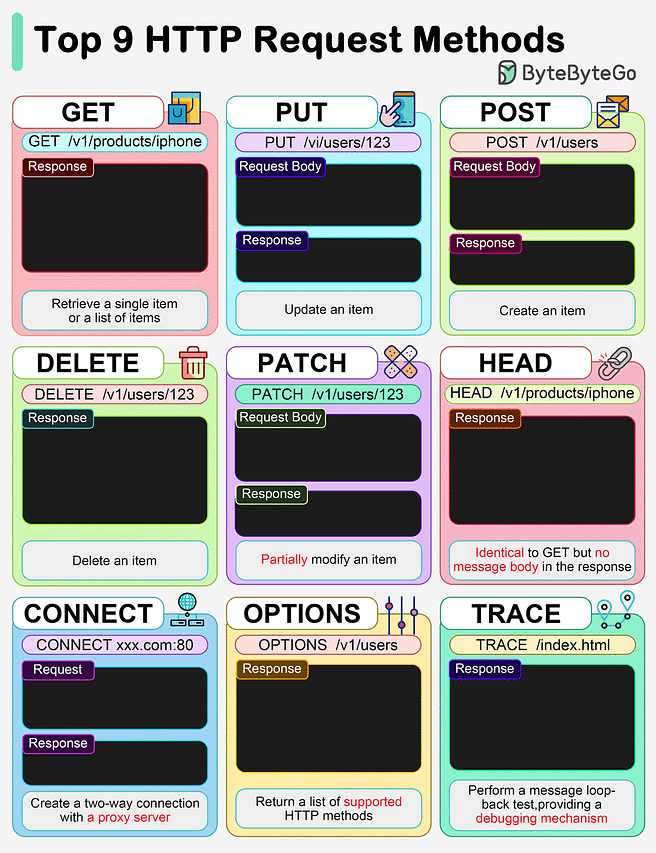link: HTTP
HTTP Methods
HTTP methods are standardized actions that clients can use to interact with servers via HTTP requests. Each method tells the server what action to perform, ranging from fetching a resource to processing data.
Diagram

Overview
HTTP methods are fundamental to HTTP request-response cycles, allowing web clients (such as browsers) and servers to communicate actions clearly. These methods are part of the request line in an HTTP request, which also includes the URI and HTTP version.
Common HTTP Methods
HTTP defines a set of request methods to indicate the desired action to be performed for a given resource. Here’s a breakdown of the most commonly used HTTP methods:
Info
- GET: Retrieves data from a server at the specified resource. GET requests should only retrieve data and have no other effect.
- POST: Sends data to the server. For example, posting form data or uploading a file. POST requests may create new resources or update existing ones depending on the application logic.
- PUT: Replaces all current representations of the target resource with the uploaded content.
- DELETE: Removes all current representations of the target resource given by a URI.
- HEAD: Similar to GET, but it transfers the status line and header section only. This is useful for retrieving meta-information written in response headers, without having to transport the entire content.
Other HTTP Methods
Besides the commonly used methods, there are additional methods provided by HTTP that enable more nuanced interactions and functionalities:
Info
- PATCH: Applies partial modifications to a resource. PATCH is used to update parts of a single resource, which has an advantage over PUT in that it allows the sending of a partial data set.
- OPTIONS: Describes the communication options for the target resource. Useful for discovering allowed methods and other options.
- CONNECT: Establishes a tunnel to the server identified by a given URI.
- TRACE: Performs a message loop-back test along the path to the target resource, providing a useful diagnostic mechanism.
Usage Considerations
Understanding when and how to use these methods is crucial for effective web development and API design:
Warning
- Idempotency and Safety: Methods like GET, PUT, and DELETE are idempotent, meaning multiple identical requests should have the same effect as a single request. However, methods like POST and PATCH are not idempotent.
- Safety: GET and HEAD are considered safe methods because they do not modify resources. Using safe methods appropriately is crucial for web crawling and indexing by search engines.
Conclusion
HTTP methods are a critical component of the HTTP protocol that define the action to be performed on a resource. By using HTTP methods appropriately, developers can ensure more secure, efficient, and clear interactions between clients and servers, facilitating better web and application functionality.